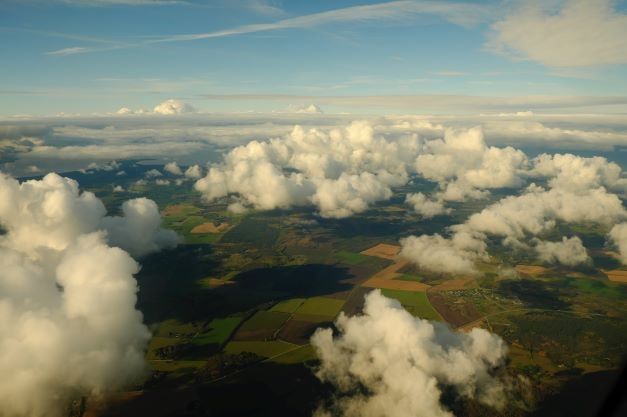The contraction of the layers of the atmosphere is a cause for concern
There is a pressing need for further measurements to determine the scope of the phenomena of layers of the atmosphere thinning down.

Changes in the different layers that form the atmosphere, due to the presence of greenhouse gases, generate alterations in the dynamics of the protective layer of our planet, which causes it to contract, a situation that alters the trajectories of satellites and affects orbital lifetimes.
This is according to Juan A. Añel Cabañelas, a researcher from the University of Vigo, Spain, who participated in the lecture series "Current panorama of atmospheric sciences and climate change", organized by the Institute of Atmospheric Sciences and Climate Change of the UNAM.
A specialist in climate research and risk assessment from the University of Oxford, in the United Kingdom, explained: "this is one of the biggest problems that have been detected because it produces an increase in space debris. We have a lot of space debris and perhaps a lot of people are not aware of it - with 33 million objects flying overhead - and the main method of removing it is for it to burn up in the atmospheric incinerator".
The stratosphere contracts, and objects that were expected to be burned or removed from space prevail, increasing their orbital lifetime and the amount of space debris.
In his presentation "The structure of the middle atmosphere under climate change", he added that even though the sending of satellite data seems not to be sensitive to the chemical composition of the atmosphere, the truth is that the changes cause the initial configuration of a satellite is not what was expected and, therefore, that there are problems in the transmission of signals, such as GPS or measurement systems.
The professor of Earth Physics explained that the changes in the atmosphere are manifested in temperature, air density and the number of gases, for example, the increase of carbon dioxide in the upper layers leads to a greater density of electrons.
A study in which pollutant emissions and the characteristics of the upper layer of the atmosphere were reviewed - data from 2000 were considered and their behavior was projected to 2100 - shows that little by little the increase of greenhouse gases produces a decrease in the neutral density of electrons in the highest levels, so it is expected that by the end of the century our protective layer will have been reduced by at least 30 percent.
"It is quite alarming, because it affects the highest layers, especially because we suffer a phenomenon of total contraction of the atmosphere, but from the top, because in the stratosphere it is very evident, but it was not so clear in the highest layers and it is being seen to be so. But this is in models because we have few specific observations of this phenomenon and the last is a satellite mission from Argentina that monitored this, but since then we have nothing more observational and it is a big problem," said Añel Cabañelas.
The winner of the extraordinary doctoral award recalled that in 2021 the report of the Intergovernmental Panel on Climate Change (IPCC) indicated that it is virtually certain that the stratosphere has cooled, that it is likely that the North Pole vortex has weakened since the 1980s and experienced more frequent excursions towards Eurasia, as large episodes of cold waves are determined by this phenomenon.
The UK observer at the Conference of the Parties on climate change (organized by the IPCC), remarked that anthropogenic activity alters the upper layers of the atmosphere in a more substantial way than previously thought, and today there is greater awareness of this, but it is not reported as it should be.
"Climate change goes beyond what we suffer on the day, we are burdening the planet and our atmosphere in previously unimaginable ways, as the evidence shows. However, we have multiple uncertainties about the magnitude of these changes. A great many measurements are lacking, and little effort is devoted to monitoring them," said the Spanish researcher.
Añel Cabañelas invited graduate students from UNAM and Mexico to join his work to review this phenomenon at the University of Vigo, as he recently obtained resources to advance in this type of study.




